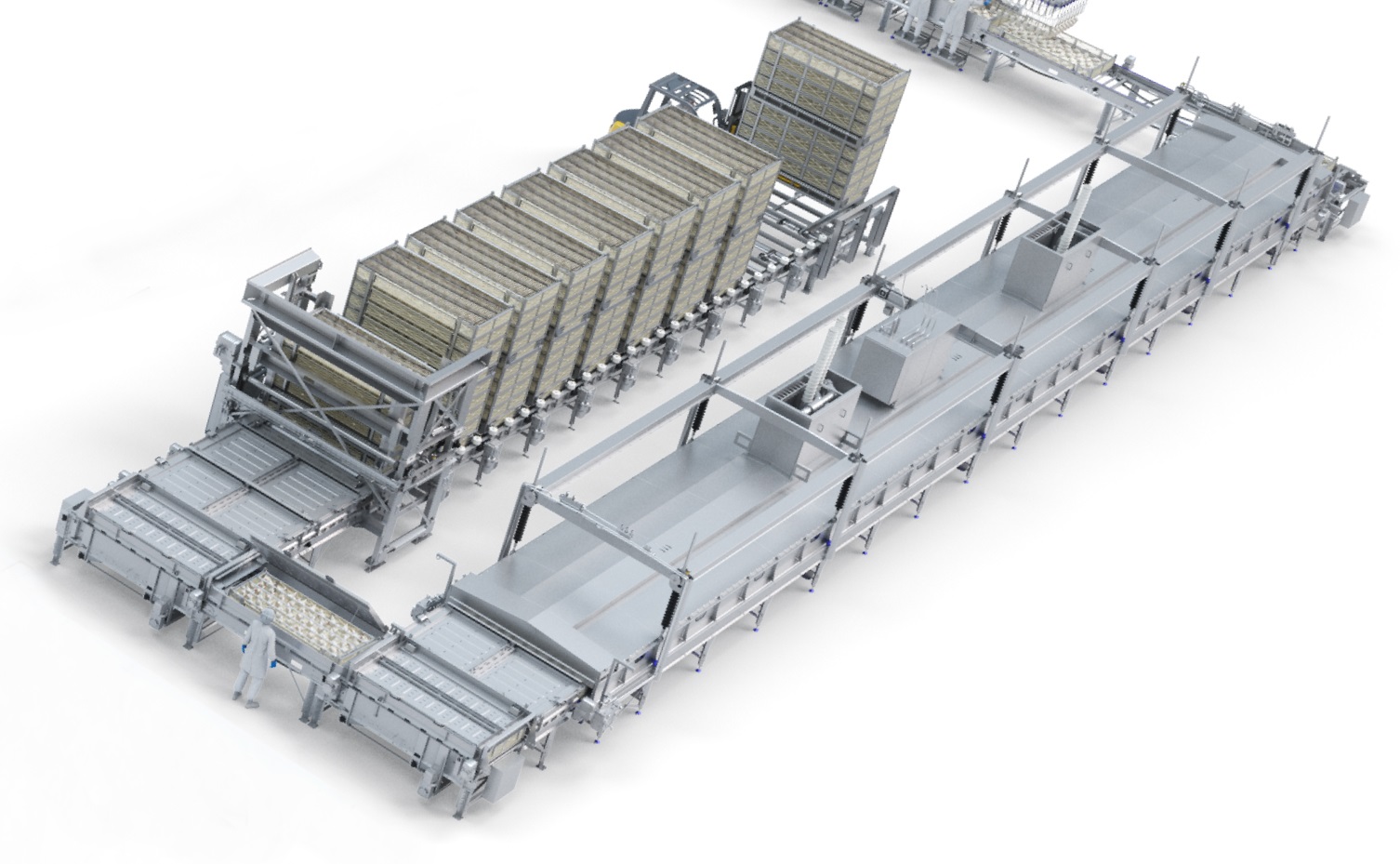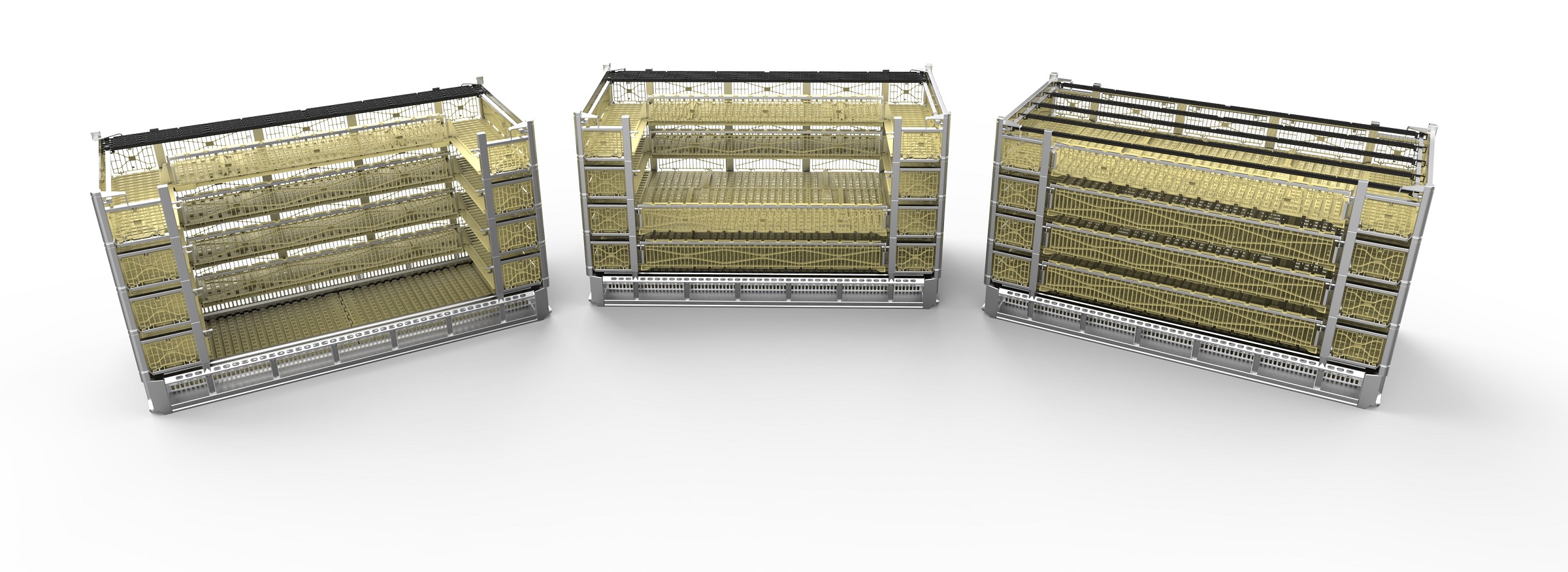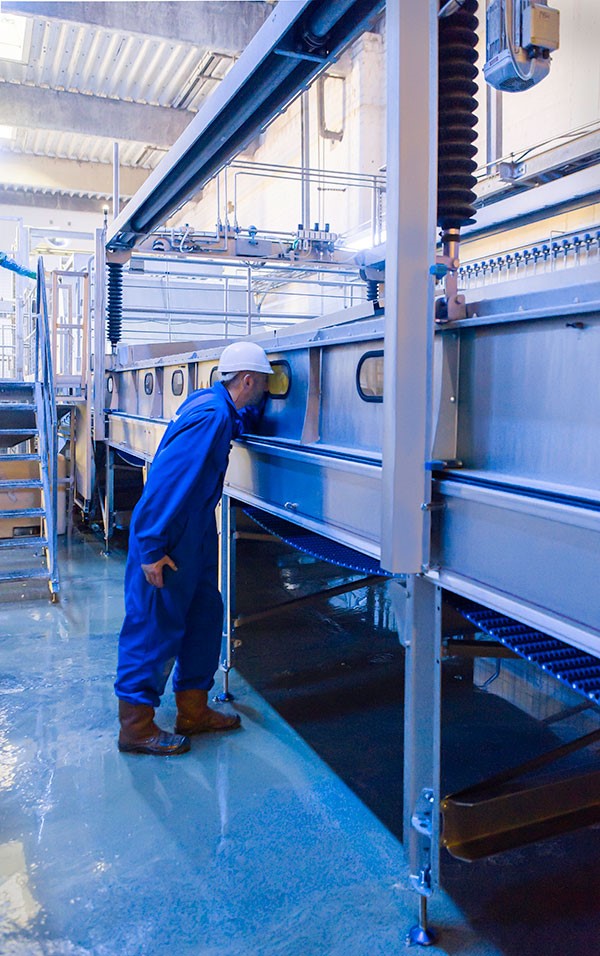“As an industry, we have a responsibility in ensuring that all stages during loading and transport are well taken care of,” says Tim van Schaik, Product Manager for Marel. “It is very much in the ethical and financial interest of both grower and processor that every effort is made to handle birds as humanely as possible, as this will make for the lowest possible number of unwelcome DOAs and downgrades.”
Manual catching
Although automatic catching machines have been on the market for a number of years, some 80% of birds in Europe and some 90% of birds in the USA are still caught manually. Catching is a demanding job. An individual catcher could be lifting and handling 20,000 to 25,000 kg over an eight hour catching shift. At the same time, breeding programs over past decades have produced top-performing birds, which deserve to be handled with care. This means paying close attention to the design of the modules into which birds, once caught, will be loaded.
Easy loading
Catching should be complete within an hour at most. Although plastic crates are still used, most high volume operators now work with multi-tier containers or modules. These modules should be brought into the growing shed and placed as close as possible to where catching is actually happening; catchers should not have to walk any distance with birds.
Tim van Schaik says, “It is particularly important that their design allows modules to be placed close to walls or corners, so that those last few birds can be caught and loaded. Modules should also allow birds to be loaded easily with minimal risk of damage.” Loading openings should therefore be big enough to allow birds to be loaded downwards onto their feet. Module design should be such as to minimize the risk of heads, wings or legs becoming trapped during loading.






